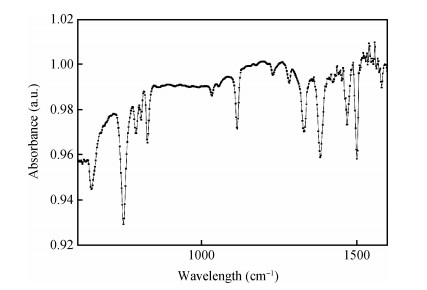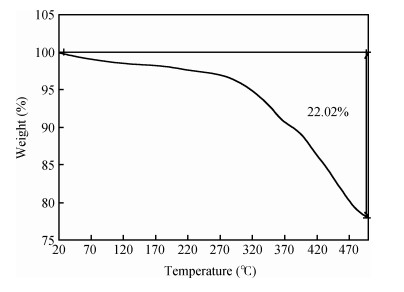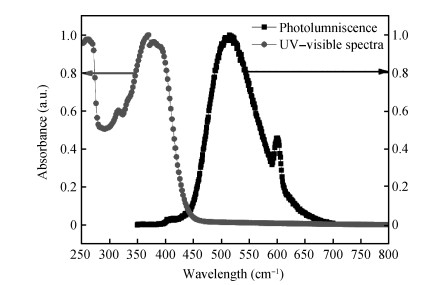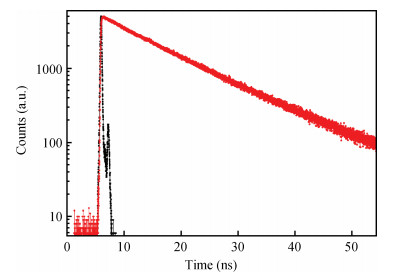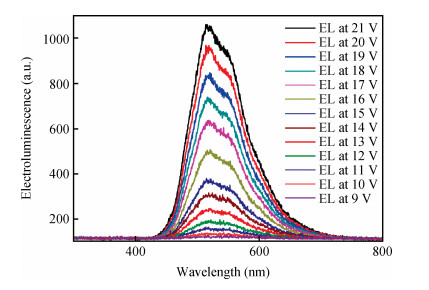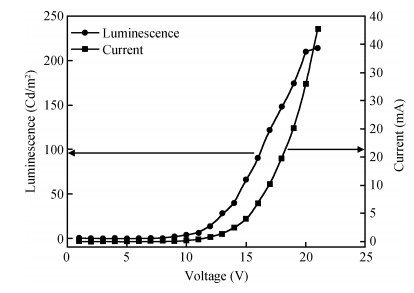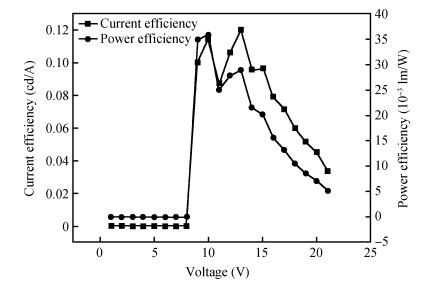| Citation: |
Rahul Kumar, Ritu Srivastava, Punita Singh. Synthesis and electroluminescence characterization of a new aluminum complex,[8-hydroxyquinoline] bis[2, 2'bipyridine] aluminum Al(Bpy)2q[J]. Journal of Semiconductors, 2016, 37(1): 013001. doi: 10.1088/1674-4926/37/1/013001
****
R Kumar, R Srivastava, P Singh. Synthesis and electroluminescence characterization of a new aluminum complex,[8-hydroxyquinoline] bis[2, 2\'bipyridine] aluminum Al(Bpy)2q[J]. J. Semicond., 2016, 37(1): 013001. doi: 10.1088/1674-4926/37/1/013001.
|
Synthesis and electroluminescence characterization of a new aluminum complex,[8-hydroxyquinoline] bis[2, 2'bipyridine] aluminum Al(Bpy)2q
DOI: 10.1088/1674-4926/37/1/013001
More Information
-
Abstract
We have synthesized and characterized a new electroluminescent material,[8-hydroxyquinoline] bis[2,2'bipyridine] aluminum. A solution of this material Al(Bpy)2q in toluene showed absorption maxima at 380 nm, which was attributed to the moderate energy (π-π*) transitions of the aromatic rings. The photoluminescence spectrum of Al(Bpy)2q in the toluene solution showed a peak at 518 nm. This material shows thermal stability up to 300℃. The structure of the device is ITO/F4-TCNQ (1 nm)/α-NPD (35 nm)/Al(Bpy)2q (35 nm)/BCP (6 nm)/Alq3 (28 nm)/LiF (1 nm)/Al (150 nm). This device exhibited a luminescence peak at 515 nm (CIE coordinates, x=0.32, y=0.49). The maximum luminescence of the device was 214 cd/m2 at 21 V. The maximum current efficiency of OLED was 0.12 cd/A at 13 V and the maximum power efficiency was 0.03 lm/W at 10 V. -
References
[1] [2] [3] [4] [5] [6] [7] [8] [9] [10] [11] [12] [13] [14] [15] [16] [17] [18] [19] [20] [21] [22] [23] [24] [25] [26] -
Proportional views






 DownLoad:
DownLoad:

